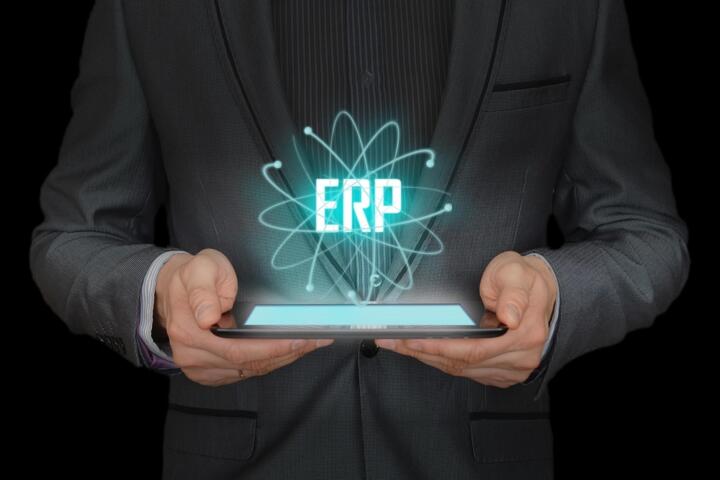In today’s fast-paced business environment, companies face the challenge of managing multiple processes—from finance and human resources to inventory and customer relations—often across disparate systems. This fragmentation can lead to inefficiencies, errors, and missed opportunities. Enter Enterprise Resource Planning (ERP) systems, which integrate core business functions into a single, unified platform. By centralizing data and automating processes, ERP solutions help businesses operate more efficiently, make informed decisions, and scale effectively. This article explores why ERP matters, common challenges, key features, and practical guidance for successful implementation.
Modern ERP systems are no longer static or limited to large enterprises. Cloud-based and modular designs have made ERP accessible even to small and medium-sized businesses, allowing them to compete on a level playing field. Whether hosted on-premise, in the cloud, or through hybrid deployment, ERP technology offers flexibility and scalability for every type of organization. Advanced solutions also incorporate artificial intelligence, machine learning, and real-time analytics—helping companies forecast demand, identify inefficiencies, and respond to market changes faster than ever before.

Why ERP Matters for Businesses
An ERP system serves as the backbone of modern business operations. Without it, organizations may struggle with:
Fragmented Data: Multiple software tools create silos that slow decision-making.
Inefficient Processes: Manual, repetitive workflows lead to delays and errors.
Poor Decision-Making: Incomplete or outdated data limits strategic insight.
Difficulty Scaling: As operations expand, disconnected systems can’t keep up.
ERP systems solve these issues by uniting all business functions within one secure, integrated environment. With real-time access to accurate information, managers can make confident, data-driven decisions. Departments collaborate more effectively, ensuring that sales forecasts align with production schedules, inventory levels, and financial planning. This level of visibility not only drives efficiency but also builds resilience—an essential quality in unpredictable markets.
Common Challenges Businesses Face Without ERP
Organizations that rely on disconnected systems experience a range of operational problems:
-
Data Inconsistencies: Financial and inventory records that don’t match.
-
Manual Reporting: Time wasted compiling spreadsheets.
-
Limited Oversight: Lack of real-time visibility into performance.
-
Regulatory Non-Compliance: Errors in reporting or recordkeeping.
-
Wasted Resources: Repetition of tasks across departments.
ERP eliminates these obstacles by synchronizing data across the entire organization and providing a single source of truth for all departments.
Key Features of ERP Systems
When evaluating ERP software, prioritize these key capabilities:
-
Centralized Data Management
A shared database consolidates financial, operational, and customer data. This transparency enhances collaboration and minimizes duplication. -
Automation of Business Processes
ERP automates workflows like billing, order processing, procurement, and payroll, freeing teams to focus on higher-value activities.
Example: When a sales order is created, inventory is updated automatically, and invoices are generated instantly—saving hours of manual work. -
Advanced Analytics and Reporting
Integrated dashboards provide actionable insights into every area of the business. Modern systems even use predictive analytics to anticipate demand and optimize resource allocation. -
Integration Capabilities
ERP can connect with CRM systems, e-commerce platforms, and supply chain tools, ensuring smooth data flow and end-to-end visibility. -
Scalability and Flexibility
As your company grows, ERP adapts—whether you’re expanding into new regions, adding product lines, or acquiring new entities. -
Security and Compliance
ERP systems maintain strict access controls, encryption, and audit logs. Many are also designed to meet global standards like GDPR, ISO, and SOX.
Industry-Specific ERP Applications
ERP isn’t one-size-fits-all. Leading systems offer industry-specific modules tailored to diverse sectors:
-
Manufacturing: Production scheduling, quality control, and materials planning.
-
Retail and E-commerce: Inventory tracking, order management, and customer analytics.
-
Healthcare: Patient data management, billing, and regulatory compliance.
-
Construction: Project budgeting, resource allocation, and vendor tracking.
-
Education: Student information systems, HR, and finance integration.
Selecting an ERP that aligns with your industry ensures that features and workflows meet your exact operational needs.
Steps to Implement ERP Successfully
A well-planned implementation determines ERP success:
-
Assess Business Needs: Define your objectives and pain points.
-
Select the Right ERP: Compare systems based on cost, scalability, and usability.
-
Prepare Data: Clean, organize, and standardize your existing information.
-
Plan the Rollout: Start small with pilot departments, then expand.
-
Train Employees: Offer comprehensive training and ongoing support.
-
Monitor and Optimize: Continuously track adoption, performance, and ROI.
Pro Tip: Strong leadership and change management are critical. ERP success depends as much on people and processes as on the technology itself.
Benefits of Using ERP for Business
Organizations implementing ERP report transformative improvements:
-
Efficiency Gains: Streamlined operations and automated workflows reduce overhead.
-
Informed Decisions: Real-time analytics drive proactive management.
-
Financial Savings: Fewer errors and optimized processes lead to measurable cost reductions.
-
Collaboration: Teams share data effortlessly across functions.
-
Customer Satisfaction: Faster order fulfillment and personalized service improve retention.
-
Sustainability: Better resource management supports eco-friendly practices.
ERP turns data into a strategic advantage—empowering companies to innovate, adapt, and compete effectively in a digital-first economy.
Conclusion
ERP systems are more than software—they are the foundation of digital transformation. By integrating key functions, automating operations, ensuring compliance, and delivering real-time insights, ERP empowers organizations to run smarter, faster, and more sustainably.
Key Takeaway: Choosing the right ERP system and implementing it strategically can revolutionize business operations. With proper planning, employee engagement, and continuous optimization, ERP evolves from a back-office tool into a growth engine—driving innovation, agility, and long-term success in an increasingly connected world.
